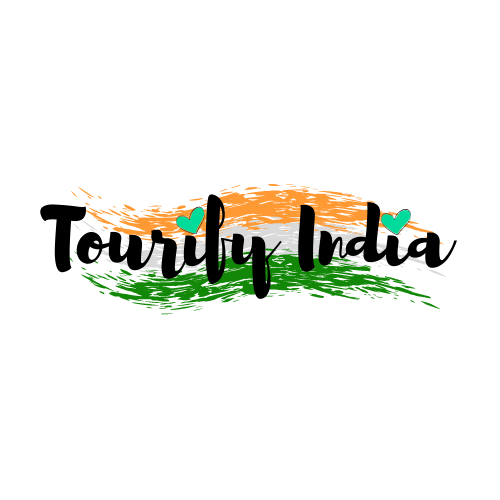When people think of Mumbai, the city is envisioned as a bustling metropolis, Bollywood glamour, and a city that never sleeps. While this is true, Dharavi is Asia’s largest slum, and is also located in Mumbai. Dharavi, on the other hand, is a thriving hub of innovative enterprises and entrepreneurial spirit. A Dharavi Slum tour reveals a world of imagination, inventiveness, and perseverance that will forever redefine your perception of urban communities.
What is Dharavi Slum?
Dharavi is a densely populated place in Mumbai, India. It is one of Asia’s largest slums and has received national and international recognition. A “slum” is termed a densely populated urban area characterized by substandard housing and associated with informal economic activities. Dharavi is a flourishing and dynamic community with its businesses, culture, and social structure.
Population Density:
Dharavi has a massive population, estimated to be approximately a million people, making it one of the world’s most densely populated areas.
Informal Settlement:
The housing situation in Dharavi needs to be more organized, with makeshift shanties and cramped rooms. The structures in the slum are constructed of materials, such as corrugated metal sheets, wooden planks, and bricks.
Diverse Community:
Dharavi slum is known for its diverse community of ethnicities, languages, and cultures. Dharavi is home to people from all over India, producing a diverse and multicultural environment.
Economic Activities:
Dharavi has a thriving informal sector. Residents work in various small-scale industries, including recycling, leather and textile manufacturing, pottery, etc. These industries contribute significantly to the Mumbai economy.
Dharavi’s thriving industries
Dharavi’s thriving informal economy is one of its most distinguishing features. The slum is home to several small-scale industries contributing considerably to the Indian economy. Recycling, leather and textile manufacture, pottery and other businesses are among them.
Mumbai Tours, which offers a Dharavi visit in their itinerary, takes you through the heart of these industries, offering an up-close look at the innovation and hard work that goes into their industries.
Recycling and Waste Management
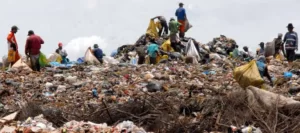
Dharavi is also known as the “recycling capital of India.” This is not an exaggeration. The slum is a recycling and waste management hotspot, with workshops converting unwanted materials into usable goods. Every material, from plastics to metals, has a place in Dharavi’s recycling ecosystem.
Our tour guide will take you through these workshops, where you can see the rigorous sorting, cleaning, and repurposing of materials. It’s an eye-opening experience that emphasizes the significance of resourcefulness and sustainability.
Leather and Textile Industry
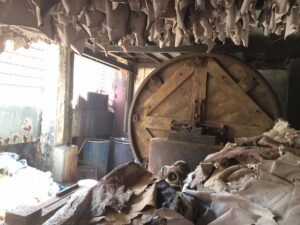
Leather and textile manufacturing is another significant business in Dharavi. Skilled artisans tirelessly manufacture complex leather products, clothes, and accessories. The narrow lanes are lined with stores selling colourful fabrics and leather goods; you can see artists creating lovely things using traditional techniques.
The leather and textile industry highlights the craftsmanship of the Dharavi artisans and demonstrates their capacity to meet market trends. Leather goods manufactured at Dharavi are sold in luxury markets in India and abroad.
Pottery and clay work
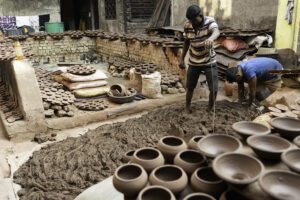
Dharavi also has a thriving pottery and clay work industry. Small workshops are seen in the Kumbharwada, where potters shape clay into everything from classic pots to modern decorative items.
Our Dharavi slum group tour takes you through these workshops, where you can witness the intricate creativity and dedication that goes into each piece. This industry demonstrates the community’s connection to its roots and commitment to preserving traditional crafts.
Plastic Recycling
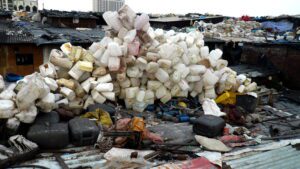
Amid global concerns over plastic waste, Dharavi’s plastic recycling and upcycling business significantly saves the environment. Workshops at Dharavi exist to turn unwanted plastics into useful goods ranging from bags and accessories to ornamental pieces.
The Dharavi slum tour reveals the resourcefulness and innovation that power this industry, demonstrating how waste can be turned into value via creativity and expertise.
Soap Making
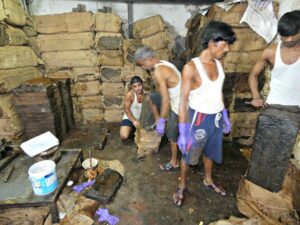
Among Dharavi’s diverse sectors, the soap-making industry is a unique venture. Local artisans use natural ingredients to make handmade soaps for dishwashing. Our Dharavi slum private tour takes you to their creative process and the care they take in creating products that serve the local population. This industry demonstrates the community’s ability to enter niche industries and adjust to changing consumer preferences.
Conclusion
Exploring Dharavi’s five industries on a slum tour is a unique experience that defies expectations. The industries not only support the local economy but also demonstrate the Dharavi community’s spirit of invention, entrepreneurship, and perseverance. Each industry has its own story about endurance, innovation, and the power of human potential.
As you walk through the alleyways, interact with artisans, and observe the processes underlying these industries, you’ll better understand Dharavi. The tour challenges stereotypes, inspires empathy, and invites a rethinking of the narratives of slums. Exploring these businesses reveals more than economic activity; it shows the human spirit’s persistent desire for growth, progress, and a brighter future.
To book your Dharavi tour with Magical Mumbai Tours, check out our tour options. Connect with us for a unique experience.

